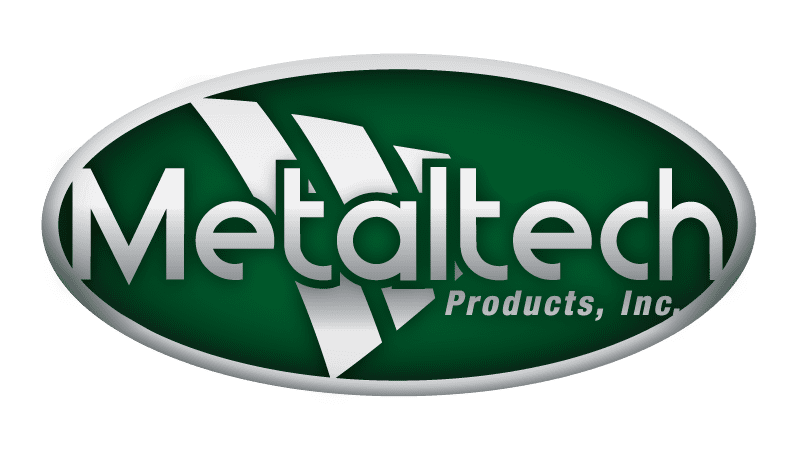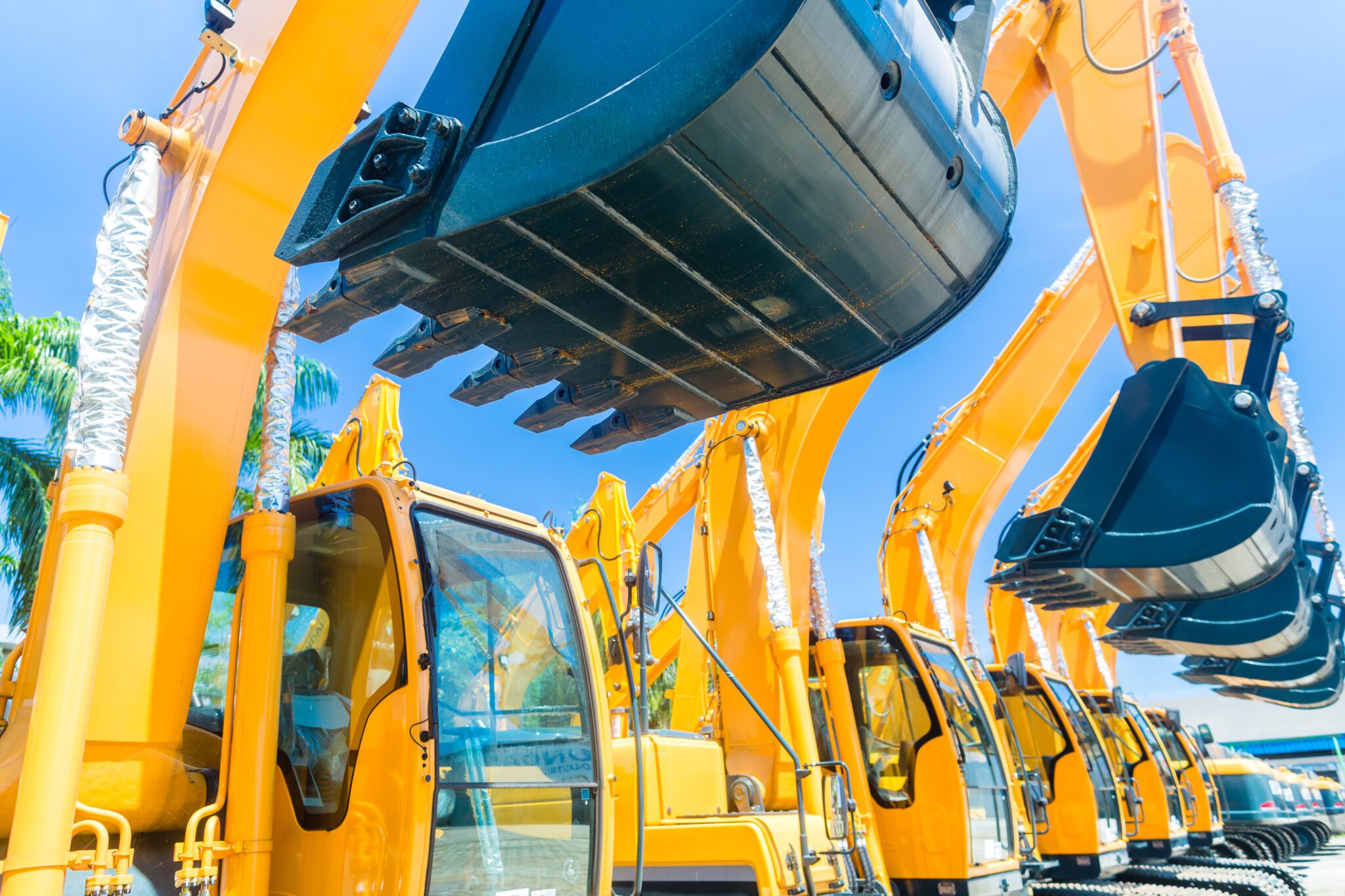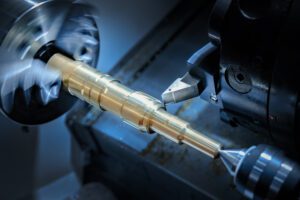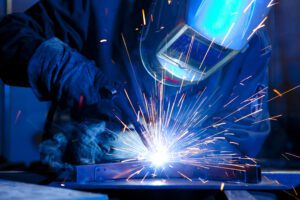From the construction projects that support our communities to agricultural operations that feed the world, the heavy equipment industry is a critical player in today’s global economy.
Heavy equipment includes the machines used for large-scale construction of commercial buildings, roads, bridges and dams. They are also used for digging tunnels, installing pipelines and mining operations. Agricultural equipment enables more efficient operations for industrial producers and small family farms alike.
The worldwide construction equipment market was valued at $182 billion in 2022 and is projected to reach $242.2 billion by 2028. Meanwhile, the farm equipment industry clocked in at $155 billion in 2022 and is expected to grow to $220 billion by 2030.
At Metaltech, we have over 20 years of experience in metal fabrication and metal manufacturing. We transform innovative designs into ready-to-install components for a wide variety of heavy duty equipment. Let’s take a closer look at the materials and machines that make up this essential industry.
Jump to:
- Metals Used in Heavy Equipment
- Heavy Duty Construction Equipment
- Heavy Equipment for Agriculture
- Need More Information?
Metals Used in Heavy Equipment
Application, durability and budget are among the considerations when choosing metal components for heavy equipment. Commonly used materials include:
- Carbon alloys: A quality carbon alloy offers the strength of steel and can be easily welded and formed into customized shapes. It is stable when exposed to extreme temperatures, corrosion resistant and wear resistant.
- Aluminum: Lightweight and corrosion-resistant, aluminum is a good choice for weight-restricted equipment. It is an excellent conductor of heat and electricity and is one of the most affordable lightweight metals.
- Stainless steel: One of the most popular metals, stainless steel features superior strength, excellent hardness and heat- and corrosion-resistance. It is a go-to choice for harsh environments. Stainless steel is more challenging to mold due to its rigidity.
Heavy Duty Construction Equipment
Heavy duty machines boost efficiency, reduce manual labor and speed up the construction process. Other benefits include improved safety and lower project costs. They must be carefully crafted from durable materials to withstand the harsh conditions in which they operate. Fabricated metal components include material handling and hydraulic systems, as well as the chassis, engine and shock absorption equipment.
Industry Trends
Trends influencing demand for heavy equipment include urbanization and industrialization around the world. Other factors driving the industry include technological advancements, mining and extraction activities, a growing interest in equipment rental services and government policies on infrastructure and energy.
Today’s heavy machines come equipped with a range of digital capabilities. Examples include AI-based collision avoidance to improve safety, GPS systems to enhance accuracy and real-time equipment monitoring for greater efficiency.
Below are some examples of heavy equipment used for large construction projects.
Excavators
As the name implies, an excavator is used for excavation, as well as heavy lifting, demolition, river dredging and tree removal. For construction projects, it removes earth and rocks from a building site and loads the material onto a dump truck. A long arm with a bucket attachment collects and removes unwanted material. The platform is mounted on wheels or tracks for movement and can rotate 360 degrees to give the operator maximum flexibility and control.
Bulldozers
Bulldozers are used for removing soil, rocks and other material in preparation for a project. They use hydraulic pistons to raise and lower a sharp metal blade to remove the topsoil layer down to a specified depth.
Backhoes
Similar to an excavator but with a smaller size, a backhoe is also used for digging and lifting out unwanted material. It features bucket attachments in front and back of the vehicle. The operator maneuvers the buckets to dig up dirt, rocks and vegetation and load the material onto a dump truck.
Loaders
Loaders transport excavated soil and other waste material for loading onto a dump truck. They include a large bucket with moving arms and either wheels or tracks for movement. A skid steer loader uses a variety of attachments to handle different types of materials, and its smaller size makes it ideal for working in smaller spaces.
Graders
A grader, also known as a motor grader, is often used in road construction. It uses a horizontal blade to level the soil and create a flat surface before pouring asphalt. Graders may also be used for clearing snow, dirt or other debris from a roadway.
Pavers
A paver lays asphalt in road construction projects. A dump truck continuously loads a hopper or feeding bucket. A conveyance system moves the asphalt from the hopper to an augur and then to a screed, which spreads and compacts the product onto the road surface. A roller follows just behind the paver to compact the asphalt even further.
Compactors
A compactor uses various types of rollers to condense material into a flat surface. It can be used for condensing dirt before building construction or asphalt in road projects. A smooth roller is ideal for shallow dirt and asphalt, while a sheepsfoot roller is used for deeper materials. Pneumatic rollers are used with fine-grained materials.
Heavy Equipment for Agriculture
Examples of metal components used in agricultural machines include attachments, frames and support structures to engine and exhaust systems. These meticulously engineered components are crafted with precision through metal fabrication, ensuring farmers can depend on their equipment to consistently deliver food to the table.
Global population growth drives increased food demand, and with it the need for agricultural equipment. Today’s machines come with advanced technologies such as GPS, sensors, automation and even data analysis. These innovations enable farmers to operate more efficiently, cut costs and increase yields. Challenges affecting the agricultural equipment sector include inflation, energy costs, labor shortages and geopolitical events.
Tractors
The primary purpose of a tractor is to pull other farm equipment, but it can also carry a number of attachments for a range of uses. It is a staple of large and small farms alike. Different types of tractors include:
- Compact: These small, high-powered tractors are great for handling a variety of materials and maneuvering in tight spaces.
- Wheeled: A wheeled tractor can handle a number of tasks using attachments designed for tilling, material handling, pulling equipment and other jobs.
- Track: Built with rubber tracks instead of traditional tires, a track tractor provides a smoother ride and is a good choice for plowing fields.
- Orchard: This type of tractor features a slender build and fits easily between trees. It is also useful for landscaping.
Tractors may be used with one or more of the following attachments:
- Plows: A plow is a long blade, which is dragged behind a tractor to cut furrows in the ground. Plowing turns the soil in preparation for planting seeds. It also gets rid of unwanted surface vegetation like grass and weeds.
- Harrows: A harrow agitates the soil to break down clumps of soil, level the surface and redistribute crop and weed residue. It may also be used after applying fertilizer to ensure even distribution.
- Fertilizer spreader: A fertilizer spreader allows quick, even application for best results. The most common model is a broadcast spreader which uses gravity to disperse the product.
- Seeders: A seeder plants the seeds after soil preparation. A broadcast seeder, also called a rotary spreader, is a good choice for cover crops and grasses. The most accurate type of seeder is known as a planter. It features a blade, which cuts into the ground before dropping the seed and covering the ground over it. The process repeats in rapid succession for quicker planting.
- Balers: Balers wrap hay, straw or corn stalks into either round or square bales. Round balers roll the material into a round shape, while square balers use a compactor to compress the material and secure it with two lengths of twine.
Combines or Harvesters
Combines, also called harvesters, include gears, blades, belts and wheels. A combine performs the following functions:
- Reaping: This involves cutting the plant in the field. A component known as a header gathers the crop, then a reel pushes it toward a cutter bar which cuts the plant at the base.
- Threshing: This means separating the edible and non-edible parts of a grain. A threshing drum beats cut crops, which separates the grain from the stalk.
- Winnowing: This step involves separating light chaff from the grain using a sieve.
Need More Information?
If you need best-in-class metal components for your products, we invite you to request a quote for metal fabrication from Metaltech today.
Have a question? Give us a call at 417-426-5577 or contact us online at any time.





